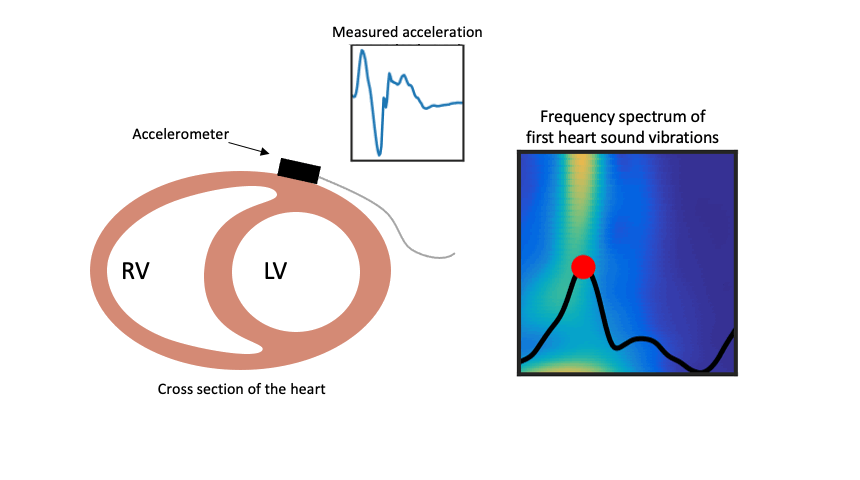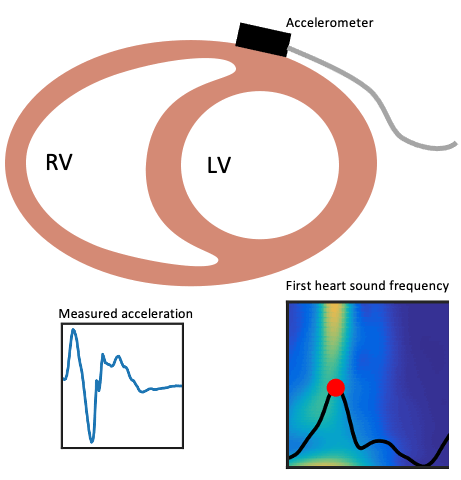
A miniaturized accelerometer can be incorporated in temporary pacemaker leads which are routinely attached to the heart during cardiac surgery. This sensor can provide continuous monitoring of cardiac motion during and following surgery.
In cardiac surgery, assessments of heart volume status and preload are essential as volume expansion usually is the first line of therapy in a hemodynamically unstable patient. Loading and unloading the left ventricle affect the myocardial tension at end-diastole and beginning of systole. Changes in myocardial tension alters the vibrations of the heart induced by valve events in a similar manner known from the physics of vibrating strings where the frequency is a function of tension as well as length and density. We hypothesized that this analogy could be transferred to the myocardium and that the frequency of the measured myocardial vibration would be proportional to the tension in the myocardium at end diastole and hence preload. We further hypothesized that this measure, based on data from a single epicardially placed accelerometer, could be used to identify fluid responsiveness, i.e. a positive response to fluid administration.
Our novel method was tested in animals with changing intravascular volume by fluid administration and phlebotomy. We compared the accelerometer-based indices with gold standard volume measurements using sonomicrometry, in addition to clinically standard measurements by PiCCO and pulmonary artery catheters.
We showed that changes in left ventricular preload can be measured by an accelerometer attached to the epicardium by assessing the changes in the first heart sound frequency. As end-diastolic volume and myocardial stiffness increased, the frequency of the myocardial vibrations associated with the first heart sound also increased and vice versa. These novel accelerometer-based measurements were comparable to the current clinical standard methods, i.e. the PiCCO and the pulmonary artery catheter, both to estimate preload and in identifying fluid responsiveness.

